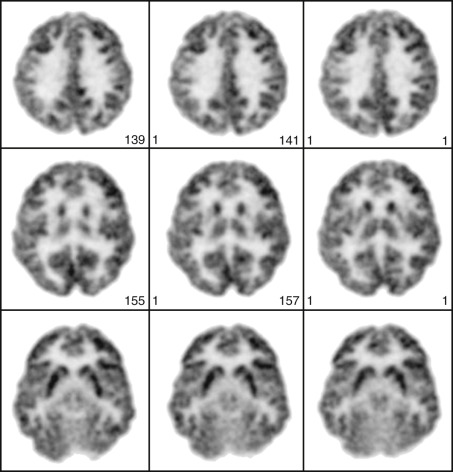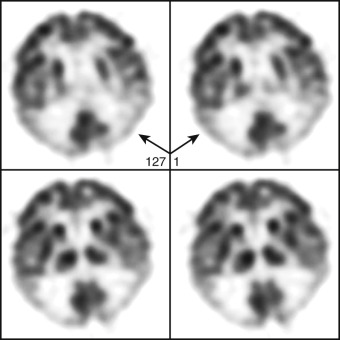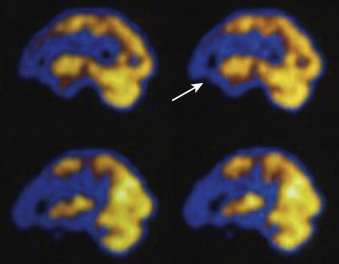Physical Address
304 North Cardinal St.
Dorchester Center, MA 02124
There are currently two single photon emission computed tomography (SPECT) radiotracers that are available to evaluate general brain function by measuring cerebral blood flow (CBF): technetium-99m ( 99m Tc) ethylcysteinate dimer (ECD) and 99m Tc hexamethylpropyleneamine oxime (HMPAO). These diffuse passively into the brain shortly after injection. Iodine-123 ( 123 I) ioflupane (DaTscan) is now available for visualizing and measuring the dopamine transporter (DaT) and is typically used for the evaluation of patients with movement disorders such as Parkinson's disease (PD). There is one positron emission tomography (PET) radiotracer, fluorine-18 ( 18 F) fluorodeoxyglucose (FDG), which is available for the evaluation of general brain function by measuring cerebral glucose metabolism. Currently, several amyloid radiotracers are approved for evaluating patients with suspected Alzheimer's disease (AD). There are many other radiotracers for evaluating all aspects of brain function including multiple neurotransmitter systems, but these are currently used only for research purposes.
Patients should be informed that the test takes approximately one hour and typically involves the injection of the radiotracer followed approximately 30 minutes later by PET or SPECT imaging depending on the radiotracer. It is important to recognize that virtually everything affects brain function, and this should be considered when discussing the preparation with the patient. Box 83-1 describes some of the issues related to scanning for general brain function.
No caffeine or nicotine should be taken on the examination day.
The patient needs to be nil per os (NPO) (i.e., is not to ingest food or fluids per mouth) after midnight and undergoes assessment of serum blood glucose levels prior to FDG PET (typically, this should be <200 mg/dL).
Medications that alter the cerebral blood flow or metabolism, including psychotropic medications, should be temporarily discontinued if clinically possible. All medications have the potential to alter brain function.
Radiotracer injection is typically performed with open eyes and ears and with low ambient light and noise.
No movement or talking after radiotracer administration is recommended.
Sedation may be required and can be given in certain circumstances but only after radiotracer injection (i.e., after ≈30 minutes) to allow for radiotracer uptake in the brain.
In most cases, CBF and glucose metabolism correlate or are coupled. Therefore, the pattern of CBF and cerebral metabolism should appear similar. Generally, brain scans should demonstrate uniform and symmetric radiotracer uptake throughout the brain ( Figure 83-1 ). There should be no cortical defects. The subcortical structures sometimes appear to have slightly higher radiotracer activity compared to the cortex. The temporal lobes can appear slightly reduced due to their location and being surrounded by bone. The cerebellum typically appears more active relative to the cortex in CBF-SPECT scans and of similar activity on FDG PET scans. With normal aging, there can be mild decreases in cortical activity, particularly in the frontal lobes.

This scan demonstrates hypometabolism in the temporoparietal regions bilaterally. This is a classic pattern observed in patients with AD. Therefore, the findings on this scan are suggestive of AD. It should be noted that there is typically a correlation between the severity of metabolic dysfunction and cognitive impairment. In addition, the temporoparietal hypometabolism pattern has also been reported in other conditions including PD and carbon monoxide poisoning.

This scan demonstrates hypometabolism in the frontal lobes bilaterally. While frontal lobe hypometabolism is associated with normal aging, marked decreases as shown in this figure are typically associated with frontotemporal dementia (FTD). As with AD, there is typically a correlation between the severity of metabolic dysfunction and cognitive impairment in patients with FTD. In addition, frontal lobe hypometabolism has also been reported in other conditions including depression, cerebrovascular disease, and aging.

Become a Clinical Tree membership for Full access and enjoy Unlimited articles
If you are a member. Log in here